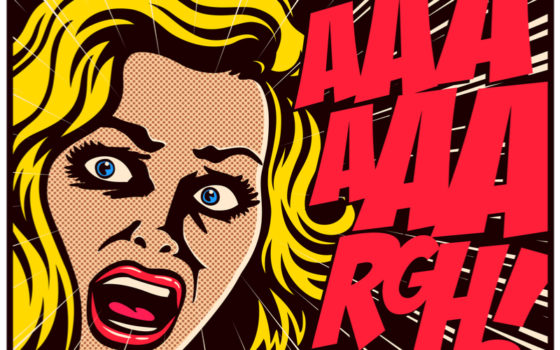This article was originally published by Stephen Davies at the American Institute for Economic Research

Among liberals of all kinds, both classical and revisionist, it is the discipline of economics that holds pride of place today. Insights from that discipline are at the heart of commentary and analysis.
However, there are other branches of the tree of scholarship that can also yield insights and help us to understand threats to individual liberty, and how to resist them. Sociology provides several of these. One of the most powerful, and greatly needed in these times, is the notion of a moral panic.
Widespread Fear
The concept of a moral panic was first explicitly formulated and given that name in a book by the British sociologist Stanley Cohen, published in 1972 under the title Folk Devils and Moral Panics: The Creation of the Mods and Rockers. The book used one particular panic (over the two supposed youth cultures of the title) to illustrate a more general thesis. This was that societies periodically suffer from episodes of panic and anxiety of a particular kind.
In these episodes, there is a widespread fear and anxiety over a perceived threat to society and order. The fear and anxiety are excessive and unreasonable (hence “panic”). This is because either the threat or problem is completely imaginary or its extent and severity is seriously exaggerated even when there is a real phenomenon. The threat is often associated with a specific deviant group or identity. These are the “folk devils” of Cohen’s title.
Again the group may be a real, actually existing one that is demonized and caricatured, or it may again be completely imaginary, with no actual existence. Confusingly though, in some cases an initially imaginary group or subculture becomes real, as people start to adopt the behavior and appearance of the invented and imaginary deviant group.The final crucial element is that the supposed threat or problem and the group supposedly responsible for it are discussed and described using the language of morality; the group is seen as evil or malevolent or as reflecting a moral failure of some kind (hence “moral”).
So there is a recurring social phenomenon in which many people are gripped by the fear that social order is threatened by some behavior or practice that is both harmful and immoral or motivated by ill will. This state of panic exists despite there not being any real foundation for it.
How though does this panic arise? Moral panics almost all have the same features and trajectory. They start with a particular episode or event, often real but sometimes completely imaginary (the supposed event is either invented or involves a misinterpretation of something quite different). The initial event receives very wide coverage and is widely discussed.
At this point, the crucial step is taken that creates a panic. Specific people (moral entrepreneurs, as they are called) claim that the reported event is actually only one instance of something much more widespread, and that there is actually an “epidemic” or “plague” of this kind of thing (medical language and metaphors are often used at this stage) so that it is increasing in frequency to a crisis level. This starts to cause anxiety and alarm and then leads to a spate of reports, rumors, and accusations. These are now reported, and so the impression gains ground that there is indeed a serious and unacknowledged problem or crisis. At this point the fully fledged panic starts.
This leads inevitably to demands for action, that “something must be done.” Institutions and powerful agencies now come under intense pressure to respond, often on the basis of “Something must be done, this is something, and therefore we should do it.” In addition, people in these agencies often support or give credence to the panic for self-interested reasons, not least because it leads to an increase in their own power and status or budget.
This means that moral panics have both an ideological source (the moral entrepreneurs who typically have sincere beliefs or an ideological agenda) and a pragmatic one (they are sustained and strengthened by people who have pragmatic or self-interested interests because they stand to gain from them). One aspect of many panics is the claim that the harm is the result of a conspiracy: this is used to dismiss rejection of the panic on the grounds that anyone who does not support the calls for action is an actual or unwitting agent of the conspiracy.
This may sound like something that is of interest only to social psychologists or sociologists who are interested in manias and panics. However, moral panics can have dramatic results that are concerning for anyone interested in the rule of law, personal liberty, and good government. This is because of the impact they can have on public policy and in particular the workings of the criminal-justice system.
Politicians and regulators often react to moral panics by introducing legislation and regulations that are at best unnecessary and wasteful, at worst seriously harmful. Sometimes, when the subject of the panic is real but exaggerated you have the problem of a sledgehammer being used to crack a nut, an excessive and overbearing response. When the panic concerns something that does not actually exist, you can have laws that severely restrict people’s freedom or impose serious costs on them for no good reason whatsoever.
However, the really bad results often happen when moral panics affect the criminal-justice system. The combination often leads to witch hunts with widespread and severe miscarriages of justice. If the panic distorts not only the enforcement of the law (bad enough) but also legislation, then it can lead to bad practice becoming embedded in the law and undermine the entire practice and principle of the rule of law.
One minor example of this happened in the United Kingdom in 1991 with the Dangerous Dogs Act. There was a panic with the usual features over attacks on children by dogs: the number of such incidents was exaggerated, it was claimed the frequency was increasing when it was not, and the ownership of “dangerous dogs” was associated with a supposed deviant working class subculture. In the act, the ownership of four specific breeds was banned (but without those breeds being clearly defined), several new criminal offenses were created, and a series of prosecutions happened — all without reducing the number of attacks by dogs in the slightest.
However, there are many much-more-serious and large-scale examples. One was the panic over “satanic ritual abuse” that swept through the English-speaking world in the 1980s. Here the idea was that there was an underground conspiracy of devil worshipers who regularly engaged in the sexual and physical abuse of children as part of satanic rituals. This began with an accusation at the McMartin preschool in Los Angeles made by a parent who it was later revealed was a paranoid schizophrenic. This led to a trial that is still the longest and most expensive in the whole of American history and to similar panics and accusations across the United States and the English-speaking world.
Dozens of people had their lives ruined by false accusations, had their children taken from them by force, and in several cases were sent to prison for very long terms for things they had not done, on nonexistent evidence and with major breaches of criminal-law procedure. In this case, prosecutors and law enforcement officials gained status and power while the moral entrepreneurs were an unholy alliance of religious fundamentalists (with a strong belief in an active physical devil) and radical feminists (who believed in the widespread sexual abuse of young children by men).
On a much-larger scale were the literal witch hunts of the early-modern period, which led to thousands being tortured and executed — Salem being just one, late example. The War on Drugs with all of its costs was partly brought about by a series of panics, in the 1880s, 1930s, 1940s, and 1970s. The recurring theme was that a racial minority were pushing drugs onto respectable white girls to turn them into degenerates who wanted to have sex with the minority in question (Chinese or Mexicans or African Americans). Sometimes large-scale panics of this kind are deliberately started by political actors for highly pragmatic and cynical reasons.
There are plenty of examples of moral panics today. These originate from both sides of the political spectrum or neither. One is the idea that there are online communities that deliberately lead young people into committing suicide (the Blue Whale Challenge). This has been a major panic in Russia since 2016. There are recurring panics about food and diet and repeated ones about sexual behavior and sexual abuse.
Pornography and the impact of video games and various kinds of online material are other examples. Another is the idea that there is a huge campus conspiracy against free speech. This is an example of a real problem that is seriously exaggerated.
One of the damaging results of panics like these is that cases where there actually is a real problem or even crisis are ignored as people become cynical and regard all claims of problems as simple scaremongering. Where a moral panic concerns a real problem that is exaggerated, the long-term consequence may be that the problem is discounted or not addressed effectively.
For example, there is solid evidence that there has been a sudden and dramatic decline in the mental health of teenagers and young adults in the last 10 to 12 years; the danger is that this will be dismissed as yet another panic. The problem of attitudes toward speech and discussion on campuses is a real one — particularly on elite campuses — but exaggerating its extent and severity will stop people thinking about what is actually happening and devising effective ways of dealing with it.
So how do you recognize a moral panic, and how can you tell if there really is an actual problem or even crisis? Fortunately, the sociologists have also got advice on that. There are several features of reporting or discussion that should lead you to suspect you are dealing with a moral panic.
These include but are not limited to the following: reporting rumor, anecdote, hearsay, and accusation as though they are facts; making quantitative claims without specific figures to support them or with figures that turn out to be false or misleading; media reporting that what other outlets are saying is the entire story; a particular kind of rhetoric and use of certain tropes (such as medical metaphors or apocalyptic imagery and language); having the same incident or story recycled; claims of the existence of a conspiracy without any actual people being named; moralistic language aimed at an unpopular or identifiable minority group. Conversely, if you find calm, serious argument and figures that can actually be supported, then you should take the argument seriously even if it turns out to be wrong.
The notion of a moral panic is a powerful one that explains much of what goes on in popular mass media, public discussion, and, all too often, actual policy. It is a valuable intellectual tool to use to protect yourself against unwarranted and dangerous anxiety and being taken advantage of by deluded or unscrupulous hucksters.
***
About the Author
Dr Steve Davies, a Senior Fellow at AIER, is the Head of Education at the IEA. Previously he was program officer at the Institute for Humane Studies (IHS) at George Mason University in Virginia. He joined IHS from the UK where he was Senior Lecturer in the Department of History and Economic History at Manchester Metropolitan University. He has also been a Visiting Scholar at the Social Philosophy and Policy Center at Bowling Green State University, Ohio.
A historian, he graduated from St Andrews University in Scotland in 1976 and gained his PhD from the same institution in 1984. He has authored several books, including Empiricism and History (Palgrave Macmillan, 2003) and was co-editor with Nigel Ashford of The Dictionary of Conservative and Libertarian Thought (Routledge, 1991).









0 Comments